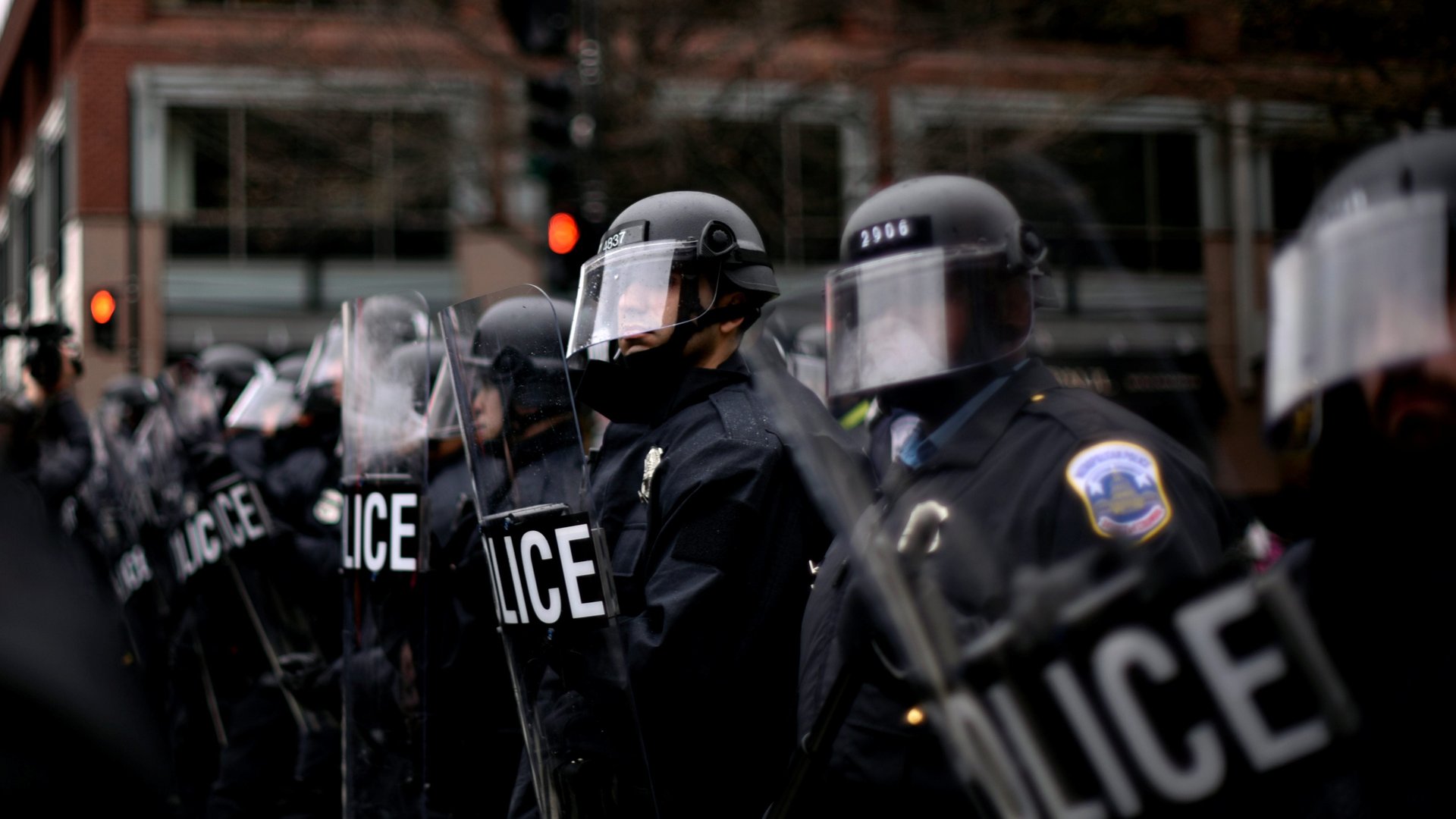The ACLU says Trump’s executive order on crime aims to “stop national trends that don’t exist”
Putting his law-and-order campaign rhetoric into practice, US president Donald Trump on Thursday (Feb. 9) signed three executive orders aiming to, respectively, reduce crime in America, crack down on gangs, and expand punishment for violence against law-enforcement officers.


Putting his law-and-order campaign rhetoric into practice, US president Donald Trump on Thursday (Feb. 9) signed three executive orders aiming to, respectively, reduce crime in America, crack down on gangs, and expand punishment for violence against law-enforcement officers.
The orders were short on detail, but all three center on the idea that “many communities across the Nation are suffering from high rates of violent crime,” as the order on reducing crime puts it. And while that’s true—one need look no farther than Chicago or Cleveland—how true it is depends on your definition of many and high. The three orders also arrive on the heels of a series of attack by the president on what he describes as America’s out-of-control crime problem. There’s just one hiccup: The numbers don’t support that premise.
“President Trump intends to build task forces to investigate and stop national trends that don’t exist,” the American Civil Liberties Union said in a statement on Feb. 9.
Trump used his inauguration speech to coin the phrase “American carnage” to describe “the crime and the gangs and the drugs that have stolen too many lives and robbed our country of so much unrealized potential.” Since then he has continued to emphasize that worldview. On Feb. 7, Trump incorrectly told a group of sheriffs that “the murder rate in our country is the highest it’s been in 47 years” and during today’s announcement of the new executive orders, he said that America faces “the menace of rising crime and the threat of deadly terror.” Newly confirmed attorney general Jeff Sessions doubled down on that idea: ”My best judgment, having been involved in law enforcement for many years,” he said, “is this is a dangerous permanent trend.”
Yes, it’s true that violent crime rose by about 4% in 2015 and by 5.3% in the first six months of 2016, according to preliminary data from the FBI, largely because of increases in large cities. But what Trump and Sessions are doing is, at best, exaggerating certain facts by taking them out of context. For example, overall violent crime rates have dropped significantly in the past two decades:
Trump’s executive order on violence against law enforcement, which would enhance protections for officers and could introduce new mandatory minimums for those who attack them, also rests on nuanced data. When speaking to a police chiefs’ association earlier this week, Trump correctly cited a statistic about the number of officers shot and killed in the line of duty last year: It increased by 56% from 2015 to 2016.
But police officers are not particularly more likely to be shot and killed now than in other periods. The actual number of officers shot last year was 64, according to preliminary data from the National Law Enforcement Officers Memorial Fund. In 2015 it was 41, a comparatively low number, but in 2011 it was 73, and in 2010 it was 60. Police deaths are relatively rare, which contributes to large year-to-year differences percentage-wise. In 2016, the increase in deaths was largely a result of an increase in deadly ambushes, among them attacks in Dallas and Baton Rouge.
“We have seen historic lows in the country’s crime rate and a downward trend in killings against police officers since the 1980s,” the ACLU said. “The president not only doesn’t acknowledge these facts about our nation’s safety, he persists in ignoring the all-too-real deaths of Black and brown people at the hands of law enforcement.”